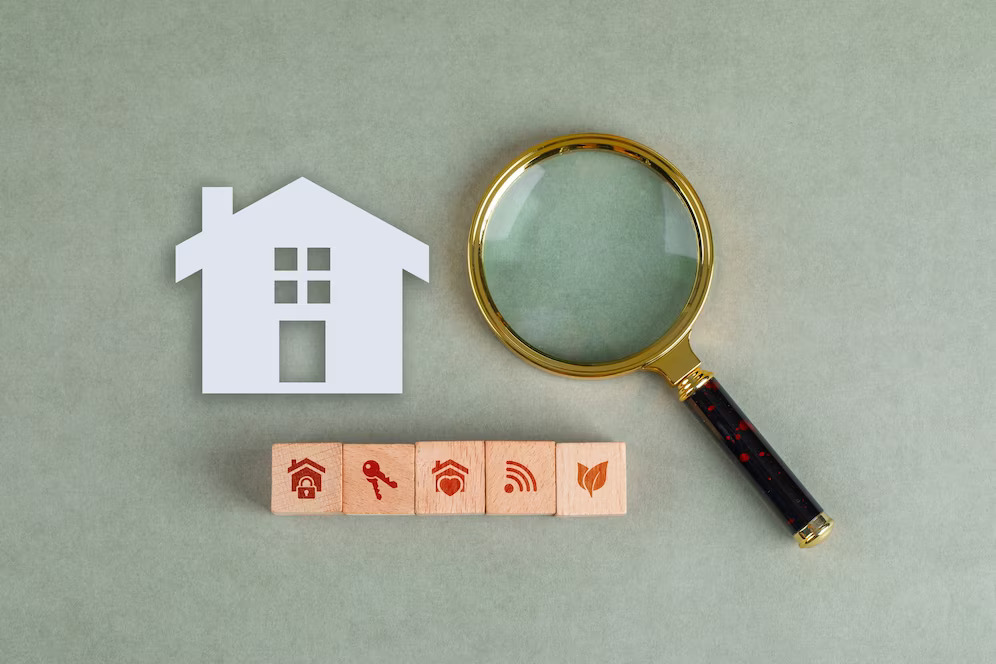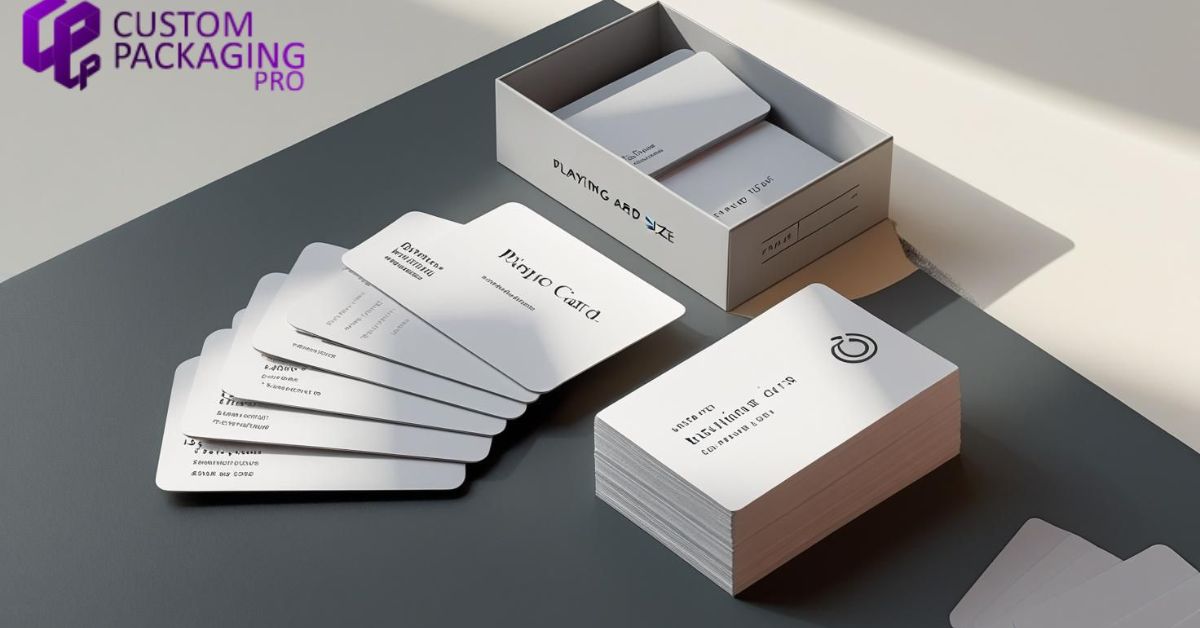BUSINESS
What Maryland Sellers Need to Know About Home Inspections

If you plan to sell your home in Maryland, you’re focused on staging, pricing, and marketing your property. But there’s another crucial aspect of the home-selling process that you shouldn’t overlook: the home inspection. A Home Inspection in Maryland is a standard part of most real estate transactions, and understanding what to expect can help you navigate this process more smoothly.
In this comprehensive guide, we’ll walk you through everything Maryland sellers need to know about home inspections. From what they entail to how you can prepare, we’ve got you covered. So, let’s dive in and demystify the home inspection process for Maryland sellers.
Understanding Home Inspections in Maryland
Before we delve into the specifics, let’s start with the basics.
What is a Home Inspection?
A home inspection is a thorough examination of a property’s condition, typically conducted by a licensed professional. The inspector will examine various components of your home, including the structure, systems, and major appliances, to identify any existing or potential issues.
Why are Home Inspections Important?
Home inspections serve several important purposes:
- They provide buyers with detailed information about the property’s condition.
- They can uncover hidden issues that might affect the home’s value or safety.
- They give buyers the opportunity to negotiate repairs or price adjustments based on the findings.
- They can help sellers identify and address issues before listing their property.
Are Home Inspections Required in Maryland?
While home inspections aren’t legally required in Maryland, they’re a standard part of most real estate transactions. Many buyers include a home inspection contingency in their offer, which allows them to back out of the deal or renegotiate if significant issues are found during the inspection.
The Home Inspection Process in Maryland
Now that we’ve covered the basics, let’s walk through what you can expect during a typical home inspection in Maryland.
Scheduling the Inspection
Once a buyer makes an offer on your home, they’ll typically schedule the inspection within a week or two. As the seller, you’ll be notified of the date and time.
Duration of the Inspection
A thorough home inspection usually takes between 2-4 hours, depending on the size and condition of your property.
What Does the Inspector Look At?
A Maryland home inspector will examine various aspects of your property, including:
- Exterior: Roof, siding, foundation, grading, and drainage
- Interior: Walls, ceilings, floors, windows, and doors
- Structural components: Foundation, framing, and roof structure
- Plumbing system: Pipes, drains, water heater, and fixtures
- Electrical system: Service panels, wiring, outlets, and fixtures
- HVAC system: Heating and cooling equipment
- Major appliances: Those that will be staying with the home
- Insulation and ventilation: In attics and crawl spaces
After the Inspection
Once the inspection is complete, the inspector will compile a detailed report of their findings. This report is typically delivered to the buyer within 24-48 hours.
Common Issues Found in Maryland Home Inspections
While every home is unique, there are some issues that frequently come up during Maryland home inspections. Being aware of these can help you prepare your property for sale.
1. Water Damage and Moisture Issues
Maryland’s climate, with its humid summers and potential for heavy rainfall, makes homes susceptible to water damage and moisture problems. Inspectors often find:
- Signs of water intrusion in basements or crawl spaces
- Mold or mildew growth
- Damaged or improperly installed gutters and downspouts
2. Roof Problems
Your roof is your home’s first line of defense against the elements. Common roof issues in Maryland include:
- Missing or damaged shingles
- Improper flashing around chimneys or vents
- Signs of past leaks in the attic
3. Electrical Issues
Older homes in Maryland may have outdated electrical systems. Inspectors often find:
- Outdated wiring (like knob-and-tube or aluminum wiring)
- Overloaded circuits
- Improperly wired outlets or switches
4. HVAC Concerns
Given Maryland’s varying seasonal temperatures, a well-functioning HVAC system is crucial. Inspectors might note:
- Aging or inefficient heating and cooling equipment
- Lack of proper maintenance
- Ductwork issues
5. Plumbing Problems
Plumbing issues can range from minor annoyances to major concerns. Common findings include:
- Leaky pipes or fixtures
- Outdated plumbing materials (like galvanized pipes)
- Inadequate water pressure
6. Structural Issues
While less common, structural problems can be a significant concern. These might include:
- Foundation cracks or settlement
- Framing issues in the attic or basement
- Signs of wood-destroying insect activity
Preparing Your Maryland Home for Inspection
Now that you know what inspectors look for, let’s discuss how you can prepare your home to make a good impression.
1. Provide Easy Access
Ensure the inspector can easily access all areas of your home, including:
- Attic and crawl spaces
- Electrical panel
- Water heater and HVAC equipment
- Under sinks and around toilets
2. Address Known Issues
If you’re aware of any problems with your home, it’s often best to address them before the inspection. This might include:
- Fixing leaky faucets or running toilets
- Replacing burned-out light bulbs
- Repairing broken windows or torn screens
3. Clean and Declutter
While cleanliness isn’t typically part of the inspection criteria, a tidy home can make the inspector’s job easier and create a better overall impression. Consider:
- Clearing clutter from basement and attic spaces
- Cleaning major appliances that will be staying with the home
- Trimming overgrown vegetation around the exterior
4. Gather Documentation
Collect any relevant documentation about your home, such as:
- Records of recent repairs or renovations
- Warranties for major systems or appliances
- Dates of routine maintenance (like HVAC servicing)
5. Be Prepared to Vacate
It’s generally best for sellers to leave the property during the inspection. This allows the inspector to do their job without distractions and gives the buyers freedom to ask questions and discuss findings openly.
Dealing with Inspection Results
Once the inspection is complete, you’ll need to be prepared to address the findings. Here’s how to approach this phase of the process.
Review the Report
Ask your real estate agent to share the inspection report with you. They can help you understand which issues are significant and which are minor.
Prioritize Issues
Not all inspection findings are created equal. Focus on:
- Safety issues
- Major defects that affect the home’s value
- Building code violations
Consider Your Options
Depending on the inspection results and your agreement with the buyer, you generally have several options:
- Agree to make all requested repairs
- Offer to make some repairs but not others
- Offer a credit to the buyer to handle repairs themselves
- Refuse to make any changes and risk the buyer walking away
Negotiate in Good Faith
Remember, the goal is to come to a mutually beneficial agreement. Be willing to address legitimate concerns, but don’t feel obligated to fix every minor issue noted in the report.
Maryland-Specific Considerations
While many aspects of home inspections are universal, there are some factors specific to Maryland that sellers should be aware of.
Radon Testing
Radon, a naturally occurring radioactive gas, is a concern in many parts of Maryland. Some buyers may request a radon test as part of their home inspection. If levels are high, you may need to install a radon mitigation system.
Lead-Based Paint
If your home was built before 1978, you’re required to disclose any known lead-based paint hazards. Buyers have the right to conduct a lead-based paint inspection or risk assessment.
Wood-Destroying Insect Inspection
Given Maryland’s climate, wood-destroying insects like termites can be a concern. Some lenders require a separate wood-destroying insect inspection, which is typically paid for by the buyer.
Coastal Property Considerations
If you’re selling a property in Maryland’s coastal areas, additional inspections may be needed to assess flood risk or the condition of bulkheads or other water-facing structures.
The Role of Sellers During the Inspection
As a seller, you might wonder what your role is during the home inspection process. Here are some key points to remember:
Be Honest
Disclose known issues about your property upfront. This not only fulfills your legal obligations but also builds trust with potential buyers.
Be Accessible
While you shouldn’t be present for the inspection itself, make sure you’re available by phone in case the inspector or buyer’s agent has any questions.
Be Proactive
If the inspection reveals issues you weren’t aware of, get estimates for repairs from licensed contractors. This can help you in negotiations with the buyer.
Be Realistic
Remember that no home is perfect. Be prepared to address reasonable concerns, but don’t feel pressured to fix every minor issue noted in the report.
Frequently Asked Questions About Home Inspections in Maryland
To wrap up, let’s address some common questions Maryland sellers have about home inspections.
Q: Should I get a pre-listing inspection?
A: While not required, a pre-listing inspection can help you identify and address issues before putting your home on the market. This can potentially lead to a smoother transaction and higher sale price.
Q: How much does a home inspection typically cost in Maryland?
A: Home inspection costs in Maryland generally range from $300 to $500, depending on the size and age of the home. However, in most cases, the buyer pays for the inspection.
Q: Can I be present during the home inspection?
A: While you can technically be present, it’s generally recommended that sellers leave the property during the inspection. This allows the inspector to work unimpeded and the buyers to discuss findings freely.
Q: What if the inspection reveals major issues?
A: If major issues are discovered, you’ll typically have the opportunity to negotiate with the buyer. You might agree to make repairs, offer a credit, or adjust the sale price.
Q: Are there any required inspections in Maryland?
A: While general home inspections aren’t legally required, certain types of inspections may be mandated depending on your location or the type of property. Your real estate agent can advise you on any required inspections in your area.
Conclusion
Navigating the home inspection process as a Maryland seller doesn’t have to be stressful. By understanding what to expect, preparing your home thoroughly, and approaching negotiations with a spirit of cooperation, you can successfully move through this important step in the home-selling process.
Remember, a home inspection isn’t about passing or failing – it’s about providing a clear picture of your home’s condition to potential buyers. By being proactive, honest, and reasonable, you can use the home inspection process to build trust with buyers and move confidently toward a successful closing.
Selling a home is a significant undertaking, but with the right knowledge and preparation, you can navigate each step of the process successfully. Here’s to a smooth home inspection and a successful sale of your Maryland home!
BUSINESS
Exploring the Secrets Behind XRP Prices in the UK

In the wave of digital currencies, xrp price uk, as a highly anticipated cryptocurrency, has always attracted the attention of many investors due to its price trend in the UK market. Below, we will delve into the trend of XRP prices in the UK market.
Introduction to XRP
XRP is the fundamental currency of the Ripple network, which can circulate throughout the entire Ripple network with a total quantity of 100 billion and gradually decreases with increasing transactions. Ripple is an open payment network designed to address the slow and costly cross-border payments in traditional financial systems. XRP has a certain user base worldwide due to its efficient transaction speed and low transaction fees. In the UK, with the continuous development of the digital currency market, XRP has gradually entered the view of investors.
Historical trend of XRP prices in the UK market
Looking back at the past few years, the XRP prices in the UK market have experienced significant fluctuations. In the early stages, due to the overall development of the digital currency market, XRP prices were relatively low and had small fluctuations. With the increasing market awareness of digital currencies and Ripple’s continuous expansion in the payment field, XRP prices are gradually rising. During the digital currency bull market from late 2017 to early 2018, XRP prices reached historical highs. However, the market subsequently entered a bear market, and XRP prices also dropped significantly. In recent years, its price has fluctuated within a certain range, influenced by various factors such as market supply and demand, macroeconomic environment, and regulatory policies.
Factors affecting the price trend of XRP in the UK market
From the perspective of market supply and demand, if the demand for XRP in the UK market increases while the supply remains relatively stable, prices tend to rise; Otherwise, it will decline. The macroeconomic environment also plays an important role. When the economic situation is unstable, investors may shift their funds to safe haven assets such as digital currencies, thereby driving up XRP prices. In terms of regulatory policies, the UK’s regulatory attitude and policy changes towards digital currencies will directly affect market confidence. If regulatory policies tighten, it may lead to investors selling XRP and causing prices to fall; Loose policies are conducive to price increases. In addition, Ripple’s business development, technological innovation, and cooperation with financial institutions will also have an impact on XRP prices.
Future trend outlook
Looking ahead, the XRP price trend in the UK market is full of uncertainty. On the one hand, if Ripple can make more breakthroughs in the payment field, cooperate with more financial institutions, and maintain relatively loose digital currency regulatory policies in the UK, then XRP prices are expected to rise. On the other hand, the competition in the digital currency market is fierce, and new competitors are constantly emerging, which may have an impact on XRP’s market share. Meanwhile, changes in the global economic situation and adjustments in regulatory policies may also lead to price fluctuations. Investors need to consider various factors comprehensively and make cautious investment decisions when paying attention to the trend of XRP prices.
BUSINESS
From Handshake to Handoff: Why Business Cards and Their Boxes Still Matter in Modern Branding

In an era where most interactions happen online, physical tools like business cards and business card boxes might seem outdated. But for businesses serious about branding, the handshake isn’t complete until a card is exchanged—and properly stored. Despite rapid digitalization, these tangible elements still pack a punch in first impressions, organization, and brand continuity.
Let’s break down why business cards and their custom packaging matter more than ever.
The Enduring Power of a Physical Card
The act of handing over a business card creates a tactile and memorable moment. It’s more than contact information—it’s a reflection of your brand.
- Credibility: A high-quality business card suggests trust and seriousness.
- Brand Recognition: Color, typography, and layout all reinforce visual identity.
- Networking Efficiency: In fast-paced conferences or meetings, it’s faster and more professional to hand a card than to fumble with phones.
Even with NFC tech and QR codes rising, physical business cards remain irreplaceable for many professionals. And when they’re accompanied by well-designed business card boxes, they elevate the entire experience.
What Makes a Business Card Box Essential?
Business card boxes are often overlooked, but they serve both practical and branding purposes.
| Feature | Benefit |
| Protection | Prevents bends, smudges, and wear |
| Organization | Keeps multiple styles or contacts separated |
| Presentation | Gives a professional touch during handover |
| Branding Surface | Offers logo space for subtle marketing |
| Bulk Utility | Useful for tradeshows, sales teams, and events |
For B2B industries—where first impressions matter most—custom business card boxes can serve as silent brand ambassadors.
Designing for Impact: Tips for Modern Business Cards
To make a card that lands well, keep these tips in mind (especially if you’re opting for a standard playing card size, which is popular for creative business card designs):
- Use durable materials like 16pt or 18pt stock with matte or glossy finishes.
- Consider embossing, foil stamping, or spot UV for texture.
- Keep designs minimal but branded—colors, icons, and fonts matter.
- Add QR codes that link to portfolio, website, or LinkedIn.
Cards may be small, but their influence is large when the design aligns with the brand’s values. Combined with well-matched business card boxes, you ensure brand consistency from creation to presentation.

Who Needs Custom Business Card Boxes?
Custom boxes aren’t just for storage—they’re an extension of your professional story. Here’s where they shine:
| Industry | Use Case |
| Real Estate | Client meetings, open house handouts |
| Consulting Firms | Brand authority in corporate networking |
| Design Agencies | Creative presentation of contact info |
| Event Planners | Quick access to cards for vendor communication |
| Tech Startups | Pitch sessions and launch event handouts |
Having a box that holds your cards cleanly and stylishly reflects foresight and attention to detail—values every client respects.
Common User Questions Answered Naturally
- “Why do people still use business cards?”
- “How to store business cards professionally?”
- “Are business card boxes useful for networking?”
- “Best packaging for business cards”
All terms are answered conversationally to meet Google’s EEAT and voice search intent.
Why Custom Packaging Pro is the Smart Choice
If you’re looking for a partner to help you make lasting impressions, Custom Packaging Pro delivers:
- Custom-sized business card boxes with premium finishes
- Durable materials for both card protection and presentation
- In-house designers to help match your box with your branding
- Bulk discounts and reliable delivery for B2B teams
Whether you’re rebranding, launching, or attending an expo, CPP helps your brand show up sharp—card and box in hand.
FAQs
Q: Are business cards still relevant in 2025?
A: Yes! Physical business cards are still widely used in professional networking and leave a lasting impression.
Q: What are business card boxes used for?
A: They protect, organize, and elevate the presentation of your business cards.
Q: Can I get custom printed business card boxes?
A: Absolutely—companies like Custom Packaging Pro offer full customization options.
Q: What should I look for in a professional business card?
A: Durable material, clean design, brand consistency, and maybe a QR code for digital linking.

Conclusion
Even in the digital age, business cards—and the boxes that store them—deliver unmatched value in networking, branding, and presentation. For B2B professionals and growing brands, they’re a small but mighty investment. Partner with Custom Packaging ProF to create business card packaging that speaks before you say a word.
BUSINESS
Structuring the Experience: Why Fixed Audience Seating Remains a Wise Investment

Across theaters, auditoriums, houses of worship, and lecture halls in Houston, the value of fixed audience seating is both enduring and practical. Institutions that regularly host performances, presentations, or educational events benefit from structured seating layouts that provide comfort, clear sightlines, and an organized atmosphere. With thoughtful planning and quality installation, fixed seating offers a blend of functionality and design that elevates the audience experience while maximizing space.
Consistency and Order in Public Venues
One of the primary advantages of fixed seating is the sense of order it brings to any public setting. When chairs are securely anchored in place, alignment is consistent, aisles are clearly defined, and foot traffic flows smoothly. Unlike movable chairs, which may shift during use or become misaligned, fixed seating offers a uniform appearance that contributes to a professional and polished environment.
This consistency is especially valuable in high-traffic venues where large numbers of people enter and exit in short periods. Whether in a school auditorium or a conference center, guests are guided effortlessly to their seats, enhancing efficiency and minimizing confusion.
Maximizing Space Without Compromising Comfort
Fixed audience seating is designed to optimize square footage while still prioritizing guest comfort. Rows are carefully measured and spaced to accommodate legroom, ensure proper egress, and maintain clear sightlines. In venues where every inch counts, this level of precision can make a significant difference.
Additionally, modern fixed seating options offer ergonomic features that support posture during extended events. With options for upholstered backs, foldable seat pans, and armrests, venues can tailor seating to suit the duration and nature of the events they host.
These design elements not only support physical comfort but also reflect positively on the institution’s commitment to providing a welcoming and accommodating space.
Improved Safety and Code Compliance
Safety is a priority in any public venue, and fixed seating plays a significant role in maintaining a safe environment. Because the seats are permanently anchored, they are less likely to tip, slide, or obstruct pathways. Aisles and exits remain clear, which is particularly beneficial during emergencies or events requiring rapid evacuation.
Fixed seating also makes it easier for facilities to meet fire and building codes. Designated spacing and egress standards are easier to enforce when seating remains consistent. Additionally, fixed seating allows for better planning around accessibility, such as ensuring wheelchair spaces are integrated into the layout and companion seating is readily available.
Reduced Maintenance and Longer Service Life
Loose furniture is more susceptible to wear and damage. Frequent moving, dragging, and stacking can lead to faster degradation, uneven legs, or structural instability. Fixed seating, by contrast, tends to maintain its integrity over time due to its stationary nature and secure installation.
This longevity translates to lower maintenance demands and cost savings throughout the furniture’s lifespan. Cleaning crews can work more efficiently without having to rearrange or reset chairs after each event. Daily operations become smoother, and the venue’s overall appearance remains consistently tidy.
Aesthetic Options for Every Setting
Fixed audience seating is no longer limited to utilitarian rows of identical chairs. Today’s manufacturers offer a range of finishes, fabrics, and design styles that cater to various architectural and branding needs. Whether the venue is a modern performing arts center or a traditional house of worship, seating can be selected to complement the existing décor.
Color schemes, seat materials, and wood or metal details can all be customized to create a cohesive look. Beyond appearances, seating can also be designed with acoustic considerations in mind, helping to preserve sound quality throughout the space.
Installation Expertise Makes a Lasting Difference
While the quality of the seating matters, the quality of the installation is equally influential in ensuring performance and durability. Professional installation teams assess the venue layout, evaluate structural supports, and align each seat with precision. A well-executed installation eliminates uneven rows, reduces potential safety hazards, and ensures the seating meets design specifications.
Poorly installed seating can diminish the visual appeal and usability of the space. Gaps, misalignments, or loose components may affect guest satisfaction and create avoidable maintenance issues. For this reason, working with a team experienced in fixed seating installation offers reassurance and long-term benefits.
A Reliable Choice for Houston’s Gathering Spaces
Fixed audience seating provides a structured, long-lasting solution for institutions in Houston seeking to enhance comfort, safety, and aesthetic appeal. With thoughtful planning and Quality Installers, venues can ensure that their seating arrangements not only meet the demands of their events but also reflect the professionalism and care behind every gathering. Quality installation brings precision and reliability to the forefront, supporting both function and form in spaces where every seat matters.
-

 TECHNOLOGY1 year ago
TECHNOLOGY1 year agoElevating Game Day Eats: A Guide to Crafting Crowd-Pleasing Sliders
-

 ENTERTAINMENT1 year ago
ENTERTAINMENT1 year agowave_of_happy_: Your Ultimate Guide
-

 FASHION1 year ago
FASHION1 year agoGPMsign Fashion: Redefining Style with Purpose
-

 TECHNOLOGY12 months ago
TECHNOLOGY12 months agoTrader Joe’s Dayforce: Revolutionizing Workforce Management
-

 FOOD1 year ago
FOOD1 year agoAltador Cup Food Court Background: A Culinary Extravaganza Unveiled
-

 SPORTS1 year ago
SPORTS1 year agoScore Chaser Sporting Clays: A Thrilling Pursuit of Precision
-

 HOME IMPROVEMENT9 months ago
HOME IMPROVEMENT9 months agoWhat Kitchen Renovation Companies Offer Beyond Basic Remodeling
-

 NEWS1 year ago
NEWS1 year agoNyl2 Kemono: Unveiling the World




